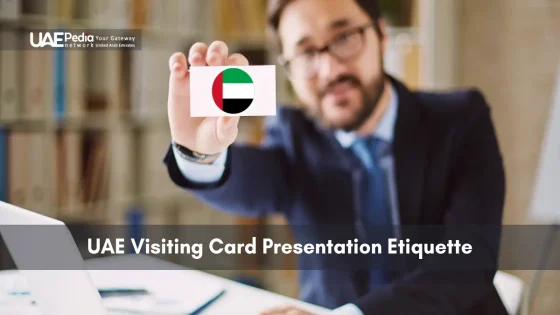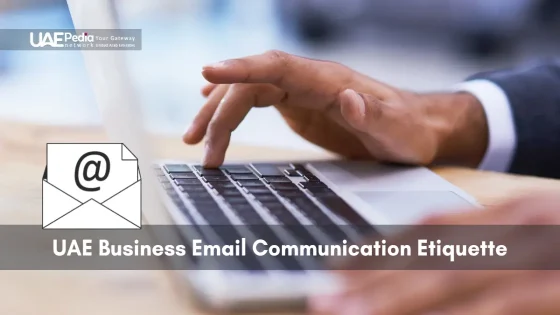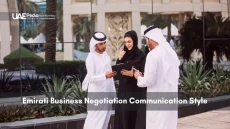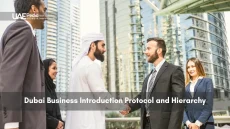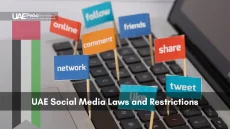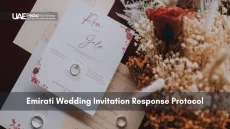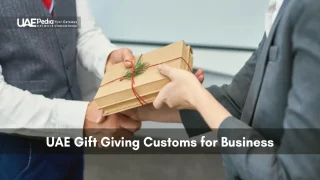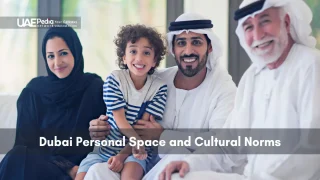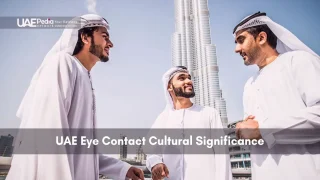What unites over a million people under desert skies every December 2? The answer lies in the rhythmic drumbeats of UAE National Day—a celebration marking the 1971 union that transformed seven emirates into one nation. This vibrant moment reflects how traditions here aren’t relics but living threads weaving past and present.
The UAE’s cultural heritage thrives through gatherings where elders share stories in majlis spaces and families honor hospitality rituals passed down generations. From henna artistry to pearl-diving lore, these practices reveal a society balancing Bedouin roots with futuristic ambition.
National Day epitomizes this blend. Fireworks erupt near futuristic skyscrapers while falconry displays echo ancestral skills. Communities host camel races, traditional dances, and poetry recitals—each act reinforcing shared identity. Even the youngest citizens wear kanduras and abayas, their laughter mingling with heritage songs.
This guide explores how such moments create unity across dunes and cities. You’ll discover:
- The historical roots of iconic celebrations
- Modern twists on time-honored rituals
- How festivals strengthen community bonds
Setting the Stage: The Essence of Emirati Culture
Imagine walking through a Dubai souk where saffron-scented air mingles with the hum of smartphones—this is the UAE’s cultural heartbeat. Here, Bedouin resilience meets skyscraper ambition, creating a tapestry woven with Islamic values and coastal trade legacies.
Understanding Heritage and Identity
White kandura robes and flowing abayas aren’t just clothing—they’re mobile history lessons. These garments shield wearers from desert sun while honoring ancestral aesthetics. Even tech CEOs sport them during board meetings, proving tradition adapts without fading.
| Traditional Symbol | Modern Adaptation | Cultural Significance |
|---|---|---|
| Handwoven Sadu textiles | Luxury hotel wall art | Preserves Bedouin craftmanship |
| Date palm fronds | Sustainable architecture material | Connects urban design to natural roots |
| Arabic coffee pots (Dallah) | Etched on the 1-dirham coin | Symbolizes hospitality nationwide |
The Role of Tradition in a Modern Society
Friday gatherings in majlis spaces keep storytelling alive—grandparents share pearl-diving tales while kids swipe tablets. Communities balance this duality effortlessly. During Ramadan, futuristic malls dim lights for sunset prayers, blending reverence with retail.
Young locals code apps by day but dance ayyala folk dances at weddings. This cultural fluidity makes the UAE’s identity uniquely dynamic—like a smartphone running ancient wisdom software.
Historical Roots and Cultural Evolution
Picture a desert horizon where seven distinct sands merge into one golden expanse—this mirrors the UAE’s 1971 union. Before skyscrapers, the region thrived as pearl-diving hubs and trade routes. Bedouin tribes navigated shifting alliances, their survival depending on shared resources and leadership. Then came December 2: the day these communities chose unity over fragmentation, birthing a sovereign nation.
The Formation of the Seven Emirates
Leaders from Abu Dhabi to Fujairah faced a stark choice—compete or collaborate. Sheikh Zayed, often called the “architect of unity,” spearheaded negotiations. His vision? A federation where each emirate retained autonomy while pooling strengths. Coastal trade knowledge from Dubai paired with Abu Dhabi’s oil prospects, creating an economic mosaic still thriving today.
The Legacy of Influential Leaders and Historical Milestones
Sheikh Zayed’s leadership wasn’t just political—it was cultural. He revived heritage crafts like sadu weaving, ensuring artisans taught younger generations. Men historically wore practical kanduras for desert life; today, these garments symbolize national pride at global events. Even modern gender roles reflect this duality—women lead space missions while preserving storytelling traditions in family majlis gatherings.
“A nation’s greatness is measured by its people’s shared memory and common purpose.”
From camel caravans to diplomatic summits, the UAE’s history pulses through daily life. Schoolchildren learn pearl-diving songs alongside robotics. Heritage sites like Al Jahili Fort host avant-garde art exhibits. This seamless blend—where past informs progress—defines the nation’s identity.
Traditional Practices and Festive Rituals
Step into a courtyard alive with the rustle of silk and the earthy aroma of oud incense—this is where generations converge to honor shared roots. Every fold of fabric and rhythmic step tells stories older than the nation itself, blending reverence with revelry.
Symbolic Attire and Ceremonial Customs
The crisp white kandura isn’t just clothing—it’s a desert survival kit transformed into a national emblem. Its loose weave breathes like Bedouin tents, while the ghutra headscarf’s black cord echoes ropes used by pearl divers. Women’s abayas shimmer with gold embroidery during festivals, their intricate patterns mapping family histories. At National Day parades, you’ll see toddlers in miniature versions swaying to drums, their outfits stitching past to future.
Family Gatherings and the Majlis Experience
Walk into a majlis during Eid, and time bends. Grandmothers knead dough for lugaimat sweets while teens share TikTok videos—all under ceilings draped with palm-frond decor. These spaces pulse with ayyala dances, where men’s canes tap out rhythms older than oil rigs. “Our gatherings are the glue,” says Fatima Al-Mansoori, a weaver from Al Ain. “Stories flow here like Arabic coffee—strong, sweet, and endless.”
- Color Codes: Men’s red-checked shemagh scarves nod to regional tribes
- Sensory Feast: Saffron-infused desserts served on hand-painted platters
- Women’s Roles: Elders teach henna art while debating modern parenting
emirati customs celebrating special occasions
December nights in the UAE glow brighter than constellations. Streets hum with patriotic chants as communities honor two pillars of their calendar: the nation’s birth and sacred Islamic holidays. These moments fuse reverence with revelry—a dance between legacy and laser shows.
National Day and Its Cultural Significance
Every December 2, cities transform into living history books. Abu Dhabi’s Corniche erupts with camel parades recalling Bedouin caravans, while Dubai Marina dazzles with drones choreographed like digital pearl divers. Schools host heritage exhibitions where kids stamp henna flags on their hands. “It’s our story in motion,” says Ahmed Al-Mazroui, a Sharjah-based event organizer. “Grandparents tear up seeing falconry displays beside AI-powered light projections.”
Eid Al-Fitr and Eid Al-Adha Celebrations
When crescent moons signal Eid, morning prayers blanket public squares. Families swap dates and eidiya gifts before feasting on lamb machboos and rosewater desserts. In Dubai’s Al Fahidi district, artisans demonstrate sadu weaving—while across town, Burj Khalifa’s LED facade flashes Quranic verses. Sharjah’s Heart of Sharjah district blends camel rides with augmented reality storytelling during Eid Al-Adha.
| Event | Traditional Elements | Modern Twists |
|---|---|---|
| National Day | Poetry recitals, horse parades | 3D projection mapping on landmarks |
| Eid Al-Fitr | Family meals, charity drives | NFT Eid greeting cards |
| Eid Al-Adha | Sacrificial rituals, communal prayers | Livestreamed mosque ceremonies |
These gatherings aren’t just parties—they’re cultural glue. Fireworks burst over mangroves as neighbors share karak chai. Teens post TikTok dances in kanduras. Through ancient rituals and Instagram stories, the UAE writes its next chapter together.
Modernity Meets Tradition in the UAE
Where ancient sands meet neon-lit skylines, the UAE crafts celebrations that dazzle both the eyes and the soul. This nation thrives on contrasts—heritage songs echo through smart cities, while augmented reality breathes new life into age-old rituals. It’s a place where innovation doesn’t erase history but amplifies it.
The Blend of Contemporary Celebrations with Historic Practices
Take National Day fireworks over Abu Dhabi’s Sheikh Zayed Grand Mosque. Drones paint the night sky with pearl-diving motifs while live ayyala dancers perform below. At Abu Dhabi’s Cultural District, holographic poets recite verses beside artisans weaving palm-frond crafts. These moments aren’t just events—they’re conversations between eras.
| Tradition | Modern Integration | Impact |
|---|---|---|
| Pearl diving stories | AR museum experiences | Teaches history through interactive tech |
| Falconry heritage | Drone light shows mimicking bird flight | Connects youth to ancestral skills |
| Henna art | Projection-mapped designs on buildings | Transforms personal adornment into public art |
Homes mirror this blend too. Smart kitchens prepare harees (wheat-and-meat porridge) using pressure cookers, while family majlis gatherings stream globally via Zoom. Recent art exhibitions in Dubai’s Alserkal Avenue fused AI with calligraphy—proof that culture evolves without losing its essence.
This duality creates a lifestyle where Bedouin hospitality meets metaverse-ready ambition. You’ll find teens coding apps in kanduras and grandmothers sharing folklore through TikTok filters. It’s not about choosing past or future—it’s carrying both forward, hand in hand.
The Art, Cuisine, and Performances of Emirati Life
Let your nose lead you through winding alleys where cardamom-scented smoke curls from street vendors’ pots—this is where flavor becomes folklore. The UAE’s creative spirit thrives in communal feasts and rhythmic performances that turn meals into memories and dances into dialogues.
Diverse Culinary Traditions and Signature Dishes
Take machboos, a saffron-kissed rice dish layered with tender meat. Its aroma alone summons families to shared platters. Then there’s harees, a creamy blend of wheat and chicken slow-cooked to velvety perfection. “These recipes are edible heirlooms,” says chef Amina Al-Mazroui. “My grandmother’s spice ratios? They’re as precise as lab formulas.”
Communal dining rules here. Neighbors swap steaming pots during Ramadan. Dates and camel milk still grace tables, bridging generations. Modern food festivals now spotlight these staples—think food trucks serving luqaimat (fried dough balls) beside gourmet coffee stands.
Cultural Performances: Music, Dance, and Art Exhibitions
Drums pulse like heartbeats during the ʿarḍah sword dance. Men wield polished blades in unison, their footwork echoing ancient battles. Women’s henna-adorned hands sway to liwa music, its melodies carried by reed flutes.
| Tradition | Modern Twist | Event Spotlight |
|---|---|---|
| Pearl-diving chants | Electronic remixes at Dubai Opera | Sharjah Heritage Days |
| Handwoven textiles | Digital art installations | Abu Dhabi Art Fair |
| Folk poetry recitals | Spoken-word festivals | Dubai LitFest |
Galleries fuse calligraphy with VR tech. Restaurants plate dishes like abstract art. Here, every bite and beat whispers: “This is who we are—and who we’re becoming.”
A Grand Tribute to Emirati Heritage and Community Spirit
Under the shimmering lights of Abu Dhabi’s skyline, the heartbeat of a nation pulses with stories older than oil and bolder than steel. Here, heritage isn’t preserved behind glass—it dances in streets where laser shows illuminate centuries-old poetry. The UAE’s seven emirates stand united not just by borders, but by shared pride in cultural roots that fuel tomorrow’s ambitions.
Abu Dhabi anchors this spirit. Its annual festivals transform desert landscapes into stages for global artistry—think holographic calligraphy at Qasr Al Hosn or fusion cuisine under Sheikh Zayed Grand Mosque’s domes. These events don’t just showcase tradition; they reinvent it. Even the Louvre Abu Dhabi bridges eras, displaying Bedouin jewelry beside digital installations.
What binds camel races to drone light shows? A community that views culture as a living conversation. From Dubai’s waterfront fireworks to Sharjah’s storytelling festivals, every celebration invites the world to witness a nation writing its legacy in real time. Locals and visitors alike savor spiced meats at food fairs, snap selfies with AI-enhanced henna, and sway to remixed pearl-diving chants.
To experience this blend firsthand, track events through trusted news sources or dive deeper into the rhythm of cultural celebrations. The UAE’s story isn’t confined to history books—it’s unfolding at street corners, souks, and skyscrapers, waiting for you to add your verse.
National Day on December 2nd transforms the Emirates with parades, falconry displays, and dazzling fireworks. Streets glow in red, green, white, and black—colors of the flag—while heritage villages pop up to showcase traditional crafts, camel races, and Emirati poetry recitals. It’s a vibrant mix of pride, history, and futurism.
Eid starts with communal prayers, followed by family feasts featuring dishes like harees (wheat and meat porridge) and luqaimat (sweet dumplings). Gifts (eidiya) are given to children, and many visit neighbors in crisp kanduras or abayas. The spirit of generosity shines, with charity drives ensuring everyone shares the joy.
The majlis—a cozy seating area—is where stories flow over gahwa (Arabic coffee) and dates. It’s a space for resolving conflicts, celebrating weddings, or discussing community matters. Think of it as the heart of hospitality, where every guest leaves with a fuller belly and a warmed heart.
You’ll see drone light shows above ancient forts, camel beauty contests hashtagged globally, and pop-up souks beside mega-malls. Events like Dubai Shopping Festival weave Bedouin-inspired markets with holographic art, proving tradition and innovation aren’t rivals here—they’re dance partners.
Don’t miss machboos (spiced rice with meat), grilled samak (fish) served with tamarind sauce, or chebab (saffron pancakes). Sweet endings? Try balaleet (vermicelli pudding) or aseeda (pumpkin dessert). Each bite tells a story of trade routes, desert survival, and coastal abundance.
From leading handicraft cooperatives reviving talli embroidery to curating art exhibitions that reinterpret folklore, women are cultural torchbearers. Initiatives like the Salama bint Hamdan Al Nahyan Foundation empower artisans while ensuring traditions evolve authentically for new generations.


